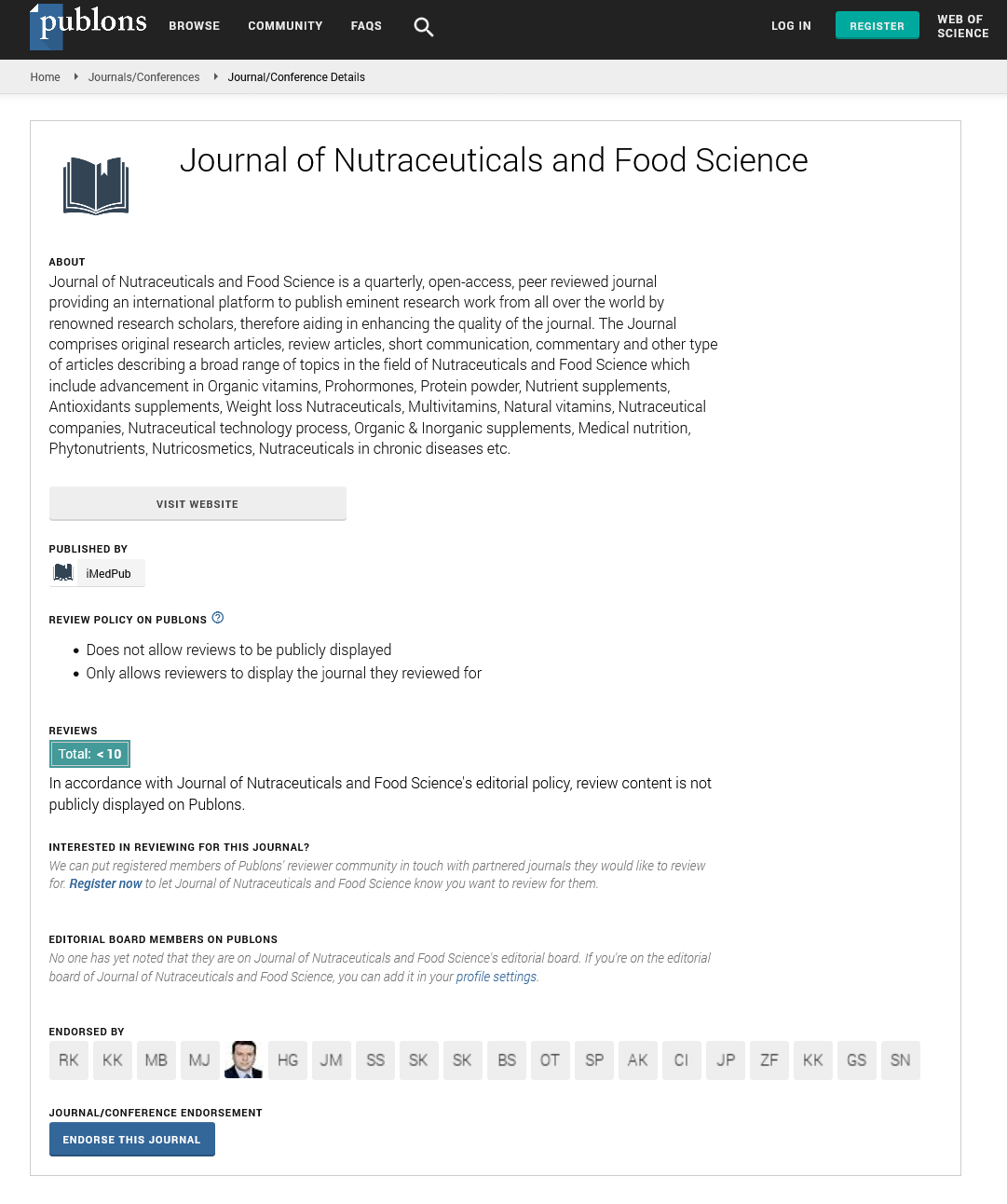Abstract
Nutraceutical Properties of Hibiscus sabdariffa Stem and Leaf Extract as a Potential Alternative to Management of Clinical Manifestations Associated with Diabetes Mellitus
The calyxes of roselle (Hibiscus sabdariffa L.), popularly known as the zobo plant in Nigeria, are often used in the preparation of drinks for recreational and medicinal purposes. However, the seasonal availability makes utilization of this part of the plant sub-optimal. Thus, evaluating additional parts of the plant would be a useful venture aimed at maximizing the benefits of the plant for both nutritional cum therapeutic uses. Thus this study was carried out to assess the nutritional evaluation as well as therapeutic properties of stem and leaf methanolic extracts of Hibiscus sabdariffa. Nutritional properties were determined by carrying out proximate analysis, amino acid profile, and mineral content using standard procedures. Therapeutic properties were assessed by evaluating blood-sugar-lowering and antilipidemic effects of the extracts of roselle stem and leaf in alloxan-induced diabetic Wistar albino rats. Thirty experimental animals weighing between 180gm and 220 gm were divided into five groups of six rats each and treated 28 days with blood samples taken every 7 days for biochemical assays. Results show that the proximate composition of the leaf showed a higher percentage of carbohydrate (33.73 ± 0.05%) and fat (20.50 ± 0.08%) compared to the stem, however, the latter recorded a higher percentage of protein (20.40 ± 0.03%), fiber (29.40 ± 0.22%) and ash (10.33 ± 0.18%), whereas moisture contents of both organs had similar values of (12.52 ± 0.03) and (12.30 ± 0.22) for leaf and stem respectively. Also, both parts contain a reasonable number of both essential and non-essential amino acids, indicating a wide distribution but varying degrees per 100 gm protein. Similarly, significant amounts of minerals including Fe, Ca, K, Mn, Mg, P, Cu, Se, and Zn in both leaf and stem, with values comparable to daily requirements were recorded. Furthermore, H. sabdariffa stem and leaf extracts each have a lowering effect on hallmarks of diabetic conditions including hyperglycemia, hyperlipidemia, and a concomitant increase in HDL level compared to the untreated group. Summarily, this study revealed that both stem and leaf of H. sabdariffahave beneficial significant nutritional components comparable to those reported for carlyxes, in addition to therapeutic properties and may serve as a potential source of functional ingredients required for optimal nutrition andhealth as nutraceuticals.
Author(s):
Ogo Agbor Ogo, Onmata Gloria, Inalegwu Bawa and Eru Ukonu Emmanuel
Abstract | Full-Text | PDF
Share this

Google scholar citation report
Citations : 393
Journal of Nutraceuticals and Food Science received 393 citations as per google scholar report
Journal of Nutraceuticals and Food Science peer review process verified at publons
Abstracted/Indexed in
- Google Scholar
- Publons
- Secret Search Engine Labs
Open Access Journals
- Aquaculture & Veterinary Science
- Chemistry & Chemical Sciences
- Clinical Sciences
- Engineering
- General Science
- Genetics & Molecular Biology
- Health Care & Nursing
- Immunology & Microbiology
- Materials Science
- Mathematics & Physics
- Medical Sciences
- Neurology & Psychiatry
- Oncology & Cancer Science
- Pharmaceutical Sciences


